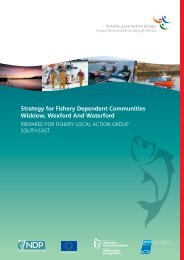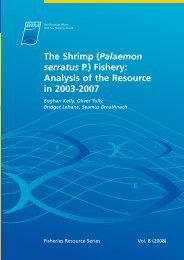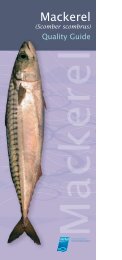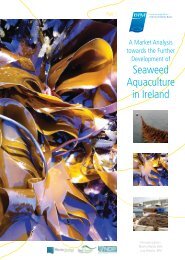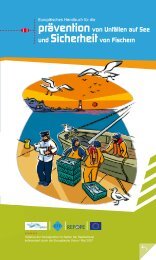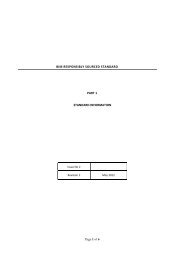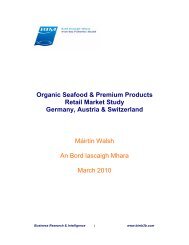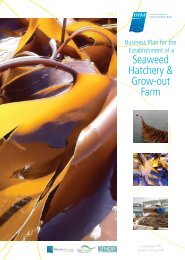Cultivating Palmaria palmata - Bord Iascaigh Mhara
Cultivating Palmaria palmata - Bord Iascaigh Mhara
Cultivating Palmaria palmata - Bord Iascaigh Mhara
You also want an ePaper? Increase the reach of your titles
YUMPU automatically turns print PDFs into web optimized ePapers that Google loves.
usually less for nets than for droppers, but the total yield per metre of longline was higher, especially when<br />
multiple harvests could be taken.<br />
On the basis of our trials of <strong>Palmaria</strong> ongrowth at sea, which have been conducted over 3 years at four different<br />
sites, the following conclusions can be drawn:<br />
42<br />
Site of cultivation: The choice of site is critical for successful grow-out of <strong>Palmaria</strong> at sea. Strangford<br />
Lough and Ard Bay seem to provide the right habitat, probably because strong currents ensure good<br />
water exchange and favourable water temperatures. Although the site at New Quay has a relatively high<br />
current flow, <strong>Palmaria</strong> production was not satisfactory. <strong>Palmaria</strong> trials have been conducted at RWB in<br />
all 3 years of the project, but it is evident that this site is not suitable for <strong>Palmaria</strong> cultivation. The<br />
sheltered position of the site means that water currents are relatively weak, so that summer water<br />
temperatures can exceed the optimum for <strong>Palmaria</strong>, and the potential for fouling also seems to be high.<br />
It was shown, however, that the site is excellent for the cultivation of several kelp species.<br />
Time of deployment: The best time for deployment of <strong>Palmaria</strong> sporelings is late autumn/early winter.<br />
Before December, the sporelings reach a size (approx 5 cm) that enables them to compete with the<br />
fast-growing fouling algae, which start to settle from late January onwards. Rapid growth of <strong>Palmaria</strong> is<br />
observed in early spring until early summer<br />
Length of cultivation: The fastest growth of <strong>Palmaria</strong> is observed from early spring until early<br />
summer. The results indicate that <strong>Palmaria</strong> fronds of the highest quality are harvestable in early-mid<br />
spring. The material can quickly deteriorate, due mainly to settlement of fouling organisms, grazing,<br />
bleaching of fronds due to high light in late spring/summer, and detachment or dislodgement of fronds<br />
when they reach lengths of over 40 cm and weights of over 100 g. An ongrowth time of 5 months from<br />
November until April seems to be optimal.<br />
In conclusion, despite some encouraging results in the project, it has not been possible – between 2008 and mid<br />
2011- to demonstrate year-on-year a consistently successful culture methodology for the sequence of <strong>Palmaria</strong><br />
sporulation – settlement on string – sea deployment – grow-out to harvest.



